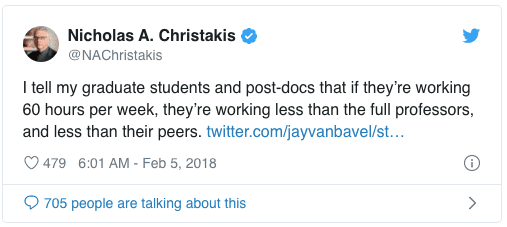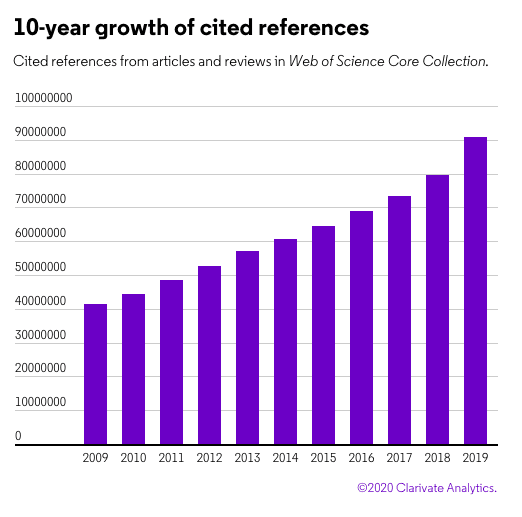This blog about writing research papers is part of our Research Smarter series. This series is dedicated to helping you get familiar with your research field. Wath our on-demand webinar, ‘Tips to save hundreds of hours writing research papers’ and read the related blog posts in our series.
A well-referenced manuscript is central to sound, robust research. The problem is that organizing, adding and formatting your bibliographic information can take a lot of time, which is a scarce resource for academics.
Academia isn’t a 9 to 5 job. According to recent surveys by Nature and Times Higher Education, around 40% of academics work more than 60 hours a week, and a lot of their actual research takes place at the weekend. Undergraduate students and PhD candidates are also known to feel the burden of long hours, often in response to intense expectation from the wider academic system.

With academic life so stretched, it’s critical that researchers learn the best and fastest way to speed up the writing process. Otherwise, hundreds of valuable research hours are at risk.
This might sound like an exaggeration, but it’s not.
Over three million articles are published annually, and this number is accelerating by 4% a year. This growing body of work is evident in citations, too. There was an average of 47 cited references across all articles and reviews in the Web of Science Core Collection™ in 2019, up from 35 in 2009.

If you add the time it takes to find, organize and add citations, you’re looking at an incredible amount of work – even more so when you include reformatting references after a rejection.
Your paper was rejected. Now what?
Submitting your paper to a new journal is already time-consuming work. Reformatting your references to suit is even more so.
The global manuscript rejection rate is 45% and so rejections are a common occurrence in the publishing process. An editor of PLoS Biology once confirmed that its rejection rate sits around 90%, which he likens to prestigious journals such as Science, Cell and Nature.
Reformatting a reference to match a journal’s preferences may only take five seconds per citation, but that accumulates fast. It quickly becomes time and energy that researchers can’t afford to spare in today’s high-pressure environment.
Luckily, that’s where the reference management software, EndNote™, comes in.
Three tips to save time when writing research
We’ve written numerous blogs about how academics can research smarter, and here, we’ll cover three tips to help you stay organized and efficient during the writing stage with EndNote.
EndNote not only frees you from the tedious work of manually collecting and curating your research materials and formatting bibliographies, but it also gives you greater ease and control in coordinating with your colleagues.
“My production levels have literally skyrocketed after using EndNote. It has been so beneficial to my academic career.”
Using EndNote, you can:
- easily collect and save large libraries of references to take with you and access remotely,
- add citations and complete your bibliography while you write, without the need to use disparate systems, and
- choose from hundreds of stylistic formats, which can be converted to match the requirements of any new journal you submit to.
Keep reading for our three tips – or watch our quick video –to make sure you’re getting the most out of your EndNote subscription.
Don’t have EndNote? No problem, sign up for a free 30 day trial.
Watch this video if you are a Windows user.
1) Save and share entire reference lists with a click of a button
Ever performed a search or found a paper so relevant to your research you wanted to save it and explore all the cited references?
With EndNote, you can import references from online research and citation databases or from your existing folders of PDFs. These can be all be saved to your EndNote library quickly and easily.
Adding references to your library does differ depending on the research or citation database you’re using. However, each roughly follows the same format.
To import from PubMed, for example, simply:
- Perform your search and mark articles of interest.
- When you have marked your records, click “Send to” and select “Citation Manager” and create file.
- Click on the downloaded file to import into EndNote.
Working with a team of co-authors? Share selected groups of references, manage team access and track activity and changes with up to 100 EndNote users.
To learn about this and more, check out our Quick Reference Guide for Windows or Mac – or try EndNote today.
2) Cite while you write
It can be tempting to think it’s quicker to write a paper and worry about adding and formatting citations towards the end of the process. This approach can be even more time-consuming, however, and puts you at risk of unintentionally failing to cite a source in your paper.
EndNote’s Cite While You Write (CWYW) feature optimizes the writing process. It connects with your word processor to add citations as you write your manuscript. That means you can connect with your EndNote library and quickly search for any reference you want to include without using disparate systems – or breaking your chain of thought.
EndNote will even format the citations within your manuscript in any style you require, while simultaneously updating your bibliography.

Once you have connected CWYW with your word processor, simply:
- Place your cursor where you want the citation to appear.
- Click “Insert Citation” to search for EndNote references without leaving Word.
- Search for the citation you wish to include using a keyword, author’s last name or title, for example.
- Highlight the citation you wish to include.
- Click “Insert.”
- Your selection will appear as an in-text citation and as a cited reference the end of your document.
“Using EndNote helps me save a lot of time. Once a reference is added in my database, there’s no need to retype the whole thing every time. I also enjoy the fact that I don’t need to keep track of where the reference appears in the text, it’s all updated automatically in the final reference list.”
3) Don’t let rejections slow down your research
Manuscript rejections are common so it’s likely you’ll face this at some point in your career. It can be painstakingly slow to reformat all your references to match another journal’s style guide. Fortunately, EndNote™ solves this problem by automating the styling process.
You simply need to select the style from hundreds of options available to you, and then quickly and easily convert your entire manuscript to that format.
Follow these steps to reformat the citations in your manuscript:
- Click on the small arrow at the bottom of the “Bibliography” section in your Word document to open up the “Configure Bibliography” command pop-up window.
- Select your preferred style from the list of favorites or use the “Browse” button to see more styles.
- Click “OK”.
You can also amend a citation style by clicking on a citation and going to the “Edit and Manage Citation(s)” button.
“When journals ask to format the manuscripts according to their style, I can trust to find a compatible style that works with EndNote. My papers are better formatted with the first submission, something that I believe enhances my chances of getting published.”
Subscribe to receive regular updates on how to research smarter





